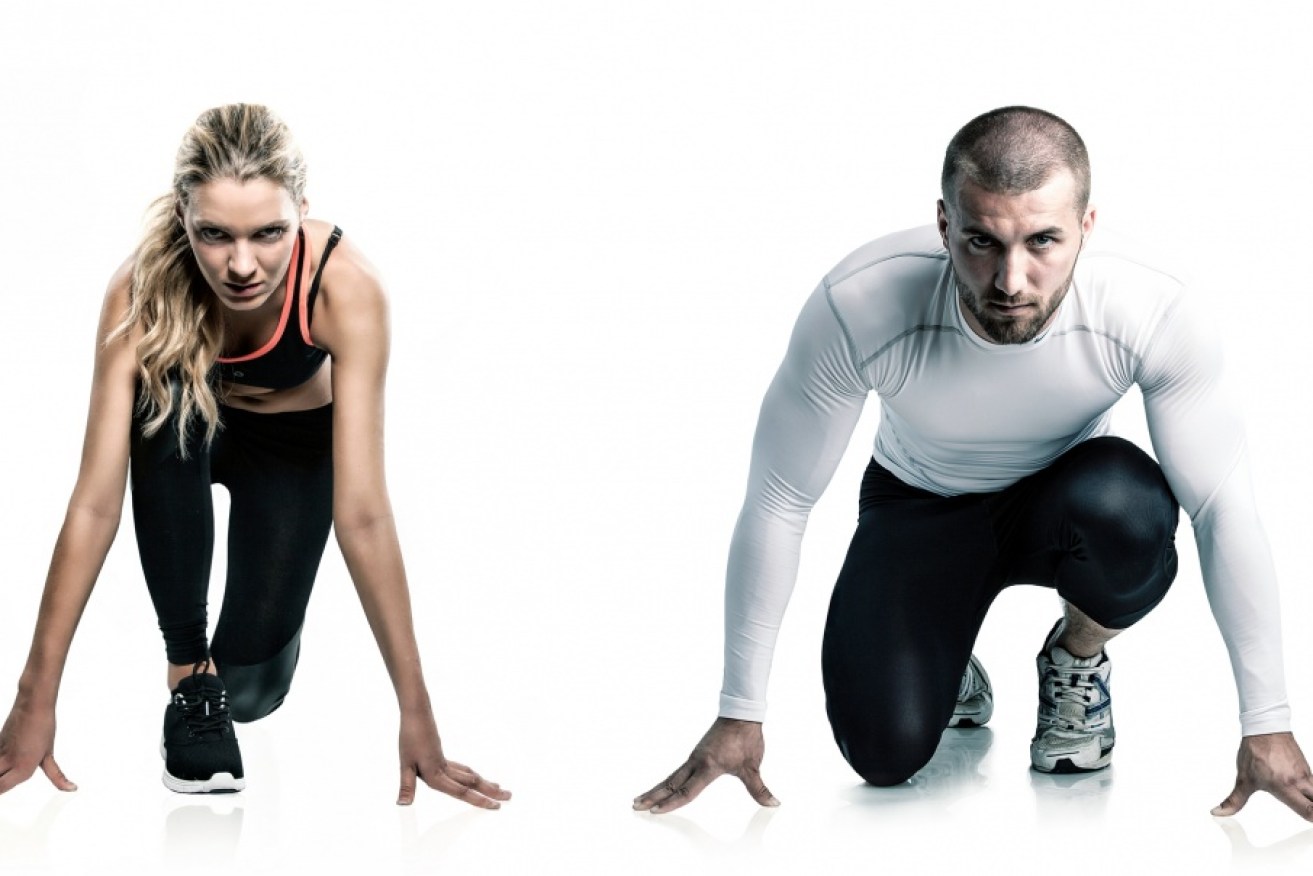Fact check: Do women burn more fat when training compared to men?


Battle of the sexes: Who's better at burning fat during exercise? Photo: Getty
If you’re exercising to burn fat, you may consider training for your gender not your body type.
Studies show that women and men store and use energy in different ways, making some of us ‘fat burners’ and the rest of us ‘carbohydrate burners’.
So, which one is which?
To put you out of your misery, women are better ‘fat burners’ when exercising compared with men. But it depends on the type of exercise, intensity and fitness level.
Here’s why.
Women burn more fat during aerobic exercise
For everyday activities, fat is the main source of fuel in our bodies irrespective of gender or sex.
When starting light or moderate exercise, say if going for a brisk walk or gentle swim, you enter the aerobic zone. Here, you’re likely to sustain the activity for a long period without huffing and puffing throughout.
It’s in this zone that women oxidise, or burn, more fat compared with their male counterparts, says Dr Krissy Kendall, a lecturer in exercise and sport science from Edith Cowan University.
“Women would be burning or utilising more fat than men if training at that same intensity.
“On the flip side men are more likely to burn carbohydrates,” she tells The New Daily.
But when you start to increase intensity, for example, by doing sprints or higher intervals on an exercise bike, your body switches to anaerobic mode and the gender differences dwindle.
“At that point men and women are both burning primarily carbohydrates, and no longer fat,” Dr Kendall says.
Generally speaking, this ‘crossover’ point from aerobic to anaerobic exercise, or going from burning fat to carbs, depends on other factors such as fitness level.
“There’s a crossover point and that’s different for anyone. The more endurance training you have, the later on that will occur,” according to Dr Kendall.
How big is the difference between men and women?
Dr Matt Barnes, from Massey University’s (NZ) School of Sport, Exercise & Nutrition, says the percentage of fat used during exercise varies across men and women.
“Females will get between 42 per cent and 73 per cent of total energy used during exercise from fat, whereas males will get between 20 per cent to 59 per cent of their energy from fat.
“This is dependent on duration and intensity of exercise. The reported differences range from 7 per cent to around 22 per cent,” he says.
Although women have higher rates of maximum fat burning, or oxidation, men follow a similar pattern, just at a lower percentage.
Dr Barnes cites one 2011 study that showed maximum fat oxidation rates occurred at 71 per cent of maximum heart rate for females, compared with 64 per cent of maximum heart rate for males.
Why are women burning more fat than men?
A few factors are at play, says Dr Kendall, who points to biological and hormonal differences between men and women.
“Women have higher or greater amounts of stored fat. And because we have higher total fat compared to men, generally speaking, when we start to exercise our bodies will rely on that fat,” she says.
Some studies show that there’s a link between a woman’s menstrual cycle and fat burning. A plausible explanation that is yet to be proven, Dr Kendall explains.
“We know there’s a hormone association there. When hormones are elevated or higher during certain phases of the menstrual cycle, women have been shown to utilise, or burn, more fat than carbohydrates during low to moderate intensity activity.”
This is because fat provides much more energy per gram, compared with carbohydrates or protein, Dr Kendall says.
Does it make any difference to overall weight loss?
Women may burn mostly fat at lower intensity, but they are not burning as many calories compared to higher intensity, anaerobic activities. So, jumping to any conclusions about weight loss in this context would be misguided, Dr Kendall says.
“I’m not a fan when people say you have to train in a ‘fat-burning zone’. It makes it sound like you’re melting fat in this zone.”
“If you walk for 20 minutes at a low intensity, for example, you will burn fat but only about 100 calories, if that,” she says.
Overall weight loss also depends on the foods you’re eating and on your physical activity, or inactivity, during the rest of the day.
“If you were only focused on exercise, you would miss the big 24-hour picture,” Dr Kendall says.








